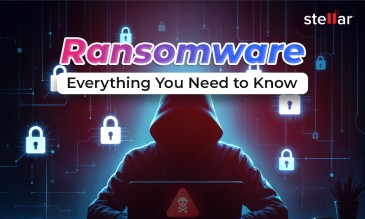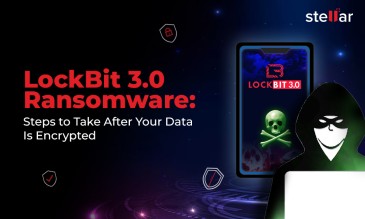There was a time when ransomware was thought of as a threat relevant only to the biggest corporations in the world. Today, ransomware attacks are so common that most of them don’t even make it to news headlines.
In the past five years alone, India has seen a surge in crippling ransomware attacks and is among the top 10 global targets. The most recent high-profile ransomware attack was on the All India Institute of Medical Sciences, Delhi, where the outage locked out patient records for days. To understand its wider impact, you can read more about the high-profile ransomware attack on AIIMS Delhi.
Then there was the ransomware attack on C-Edge Technologies that froze ATMs and online payment systems, including UPI and RTGS, for nearly 300 cooperative and regional banks.
These incidents, among many others, made national news and the ripple effects were felt not just by the organizations involved but across the cybersecurity sector.
Each of these ransomware attacks was different in scale, complexity, and impact. And each forced organizations to answer the same tough question, “What do we do now?” The right response depends on:
- how the attack unfolded,
- which systems are affected,
- how crucial is the data at stake,
- what is the type of ransomware, and
- what recovery options you actually have.
That’s why your first step should always be to understand the full picture.
Ransomware Attack Response: What Are Your Real Options?
Let’s break down your four main options, from best to worst.
1. Restore From a Recent Backup
If you have up-to-date, tested backups that weren’t affected by the ransomware virus, then restoring data from these is by far your best option.
For many Indian companies, having these backups made the difference between losing a few days and losing everything.
2. Call a Professional for Ransomware Data Recovery
If your backups are missing or damaged, or if standard tools don’t work and your in-house IT team is unable to deal with the ransomware, then we recommend you lose no time in contacting professional ransomware data recovery specialists like Stellar. We use advanced techniques to recover data encrypted or corrupted by ransomware and give you a better chance of getting business-critical files back without paying the ransom.
3. Accept the Loss (Do Nothing)
If the encrypted data isn’t critical or can be rebuilt, sometimes it’s best to simply wipe the system and start fresh.
For some, especially small businesses, this is the least painful route when no backup is available and paying the ransom or availing data recovery services isn’t an option.
In each case, the right option depends on how prepared you are and the technical nuances of the ransomware attack. The faster you can identify your best path, the less damage you’ll face.
What Not to Do
1. Do Not Use Third-Party Decryptors
Sometimes, security researchers crack a particular ransomware strain and publish a free decryptor. However, these only work on old and poorly designed variants of common ransomware. Attackers are always updating their code to stay ahead. So, if your system has been compromised recently, keep it isolated (shut down).
2. Do Not Negotiate or Pay the Ransom
This may seem like a last resort. However, paying the ransom is no guarantee that the attackers will actually give you the decryption key. In most cases, it leads to more ransom demands. Moreover, a large-scale study by Cybereason found that among those who paid the ransom, nearly 80% were victims of at least one subsequent ransomware attack. You can refer to this research report on the true cost of ransomware attacks to understand the financial and operational impact in detail.
In the next section, we’ll explain what factors determine your response and how you can move forward with confidence.
What Determines Your Response to a Ransomware Attack?
Now that you know your response paths, the next step is to figure out which option actually makes sense for you. This depends on several practical and technical factors.
1. Backup Status and Recovery Feasibility
First, check if you have recent, clean, and offline backups that weren’t affected by the ransomware virus. This is your best chance at a fast ransomware data recovery.
Your team may need several days to download and restore terabytes of data, and you’ll have to manually verify files on a separate, safe system.
Sadly, many organizations discover too late that their backup process was incomplete or their backups were also encrypted. So, always test your backups regularly.
2. Ransomware Strain and Attack Scope
Not all ransomware are equally dangerous. (We have explained the major strains in our guide on the types of ransomware.) Some strains are designed to be more destructive than others.
These can encrypt not just your files but also the Master Boot Record (which locks your entire hard drive). Others steal your data before encrypting it and then threaten to leak it unless the ransom is paid.
You need to identify the strain and assess what parts of your network have been impacted. It’s always beneficial to seek professional guidance for this.
3. Deadlines and Urgency
Most ransomware attacks impose a tight deadline on the victims to pay the ransom. Beyond that, the attackers threaten to double the ransom or distribute your critical data on the dark web.
This is psychological pressure to force a quick payment. If you don’t have a recovery plan, time works against you.
4. Legal and Compliance Requirements
Regulations also shape your options. Indian law requires that certain incidents (including a ransomware attack) be reported to CERT-In within 6 hours.
If you’re in banking or insurance, RBI or IRDAI guidelines also require rapid reporting. If your customers’ personal data is compromised, the DPDP Act applies.
All these factors combine to determine your real-world choices. Sometimes what you want to do is not what you can do, given the time crunch, legal compliance, and other limitations.
What You Want vs. What You Can Do
Every organization wants a quick, complete recovery after a ransomware attack. But the reality rarely conforms with the desired outcomes. Here’s how the situation really plays out.
- You Want:
- Complete, fast restoration of all files
- Minimal downtime
- No data loss, no public exposure
- No regulatory trouble
- But in Reality:
- Paying the ransom might seem like the quickest fix. However, there’s no guarantee you’ll get your data back. Attackers may give you a faulty decryption tool, demand more money, or simply disappear.
- Even if decryption works, your IT team will still need to rebuild infected systems from scratch to be certain all traces of the ransomware virus are gone.
- Recovery from backups can take days, and in many cases, partial data loss is unavoidable.
- Organizations that pay the ransom are targeted again; studies show up to 80% of victims who paid were hit a second time.
- Legal and compliance hurdles remain. You might still need to notify customers and regulators, even if data is restored.
After a Ransomware Attack: Legal, Compliance, and Notification
Responding to a ransomware attack is also a matter of law and compliance. In India, the rules are strict, and missing a step can lead to serious trouble that goes beyond data loss.
Mandatory Reporting
Under Indian law, any major ransomware attack must be reported to CERT-In (the Indian Computer Emergency Response Team) within 6 hours of detection. For a deeper understanding of current attack patterns and compliance obligations, refer to CERT-In’s official 2024 ransomware report. This is a legal requirement for all organizations. CERT-In will ask for details about the attack, the affected systems, and the steps you’ve taken. The clock starts ticking as soon as you detect the attack, not when you finish your investigation.
Sector-Specific Rules
If you’re in banking, insurance, or finance, you also need to notify your sector regulator. For ransomware attacks on banks, the RBI (Reserve Bank of India) requires immediate reporting.
Insurers must inform the IRDAI. Failing to do so can lead to penalties and closer regulatory scrutiny.
Data Breach Notification
If the customers’ or employees’ personal data has been stolen or encrypted, the DPDP Act (India’s Digital Personal Data Protection Act) may require you to notify the affected individuals and the Data Protection Board.
Sanctions and Payment Risk
Paying a ransom to certain groups may be illegal if those entities are under global or national sanctions. Always check the law before considering payment, and involve legal counsel.
External Support
If you have cyber insurance, contact your provider immediately. Most insurers have specific protocols, including approved vendors for data recovery, forensics, and even ransom negotiations.
Remember, failure to follow these legal and compliance protocols can be just as damaging as the ransomware attack itself.
When Should You Call a Professional for Ransomware Data Recovery?
Even with a lot of preparation, there are times when a ransomware attack can cause problems that your own team or backups just can’t fix.
That’s when it makes sense to reach out for expert help. At Stellar Data Recovery, we’ve helped businesses across many sectors, including healthcare, banks, factories, and ITES, get their data back after all kinds of ransomware attacks.
We’ve dealt with everything from locked email servers to entire storage drives that wouldn’t open after an attack.
If you find that files are still missing or you’re unable to get your business running after a ransomware attack, don’t wait too long. Contact our ransomware recovery specialists as early as you can to boost your chances of recovering from the attack.
Our team is here to offer a safe review and guide you through every step, so you can focus on getting your business back to normal.
In the end, there’s no shortcut to handling a ransomware attack. While prevention is your best defense, preparation is what makes the real difference when the worst happens.
You should not react in panic but respond with a plan so you can protect your data, your business, and your reputation.
Real-World Ransomware Recovery Case Studies
To see how our engineers recover encrypted, deleted, or corrupted data from complex ransomware incidents, explore the case studies below:
About The Author












